
Lernaean Hydra
The hydra of Lerna is one of the monsters that Hercules (Heracles) has to fight during his 12 labors. He must succeed in this last one at the request of Eurystheus.
To go further in your love of the Dragons from Greek Mythology, don't hesitate to check out these incredible products, inspired by the ancient legends :
- Three-headed Dragon Ball jointed movable action figure
- Three-Headed Dragon Robot
- Giant sea monster Hoodie
If the hydra had to be summarized in a concept, one could compare it to an evil that one cannot control.

Heracles Fights the hydra of Lerna
1. Hercules in Greek mythology
A. The hero Hercules
In Greek mythology, Heracles is the embodiment of courage and physical strength. As such, he is one of the most popular figures in Western culture.
His 12 famous works seem to have their origin in both myth and the heroic saga. Indeed, various elements lead us to believe that his story is inspired by a forgotten historical figure.
In fact, there are many similarities to certain myths in other Eastern Mediterranean countries. For example, in the Sumerian epic of Gilgamesh, we can observe a hero who, like Heracles, killed a lion and then descended into the world of the dead.
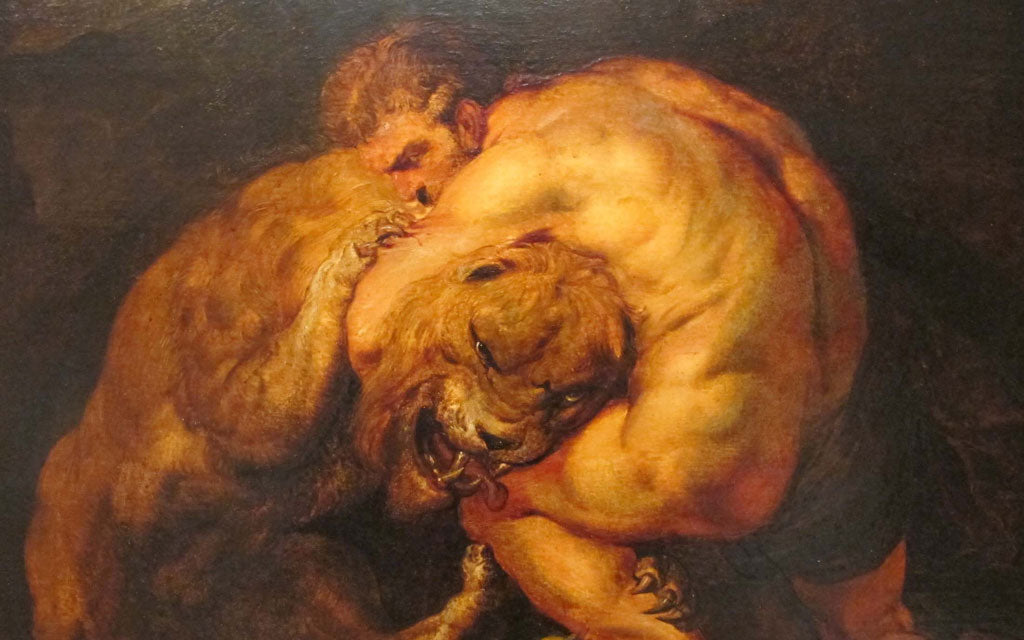
In ancient Greece, Heracles was the protector of the people and the guardian of the cities. His cult spread throughout the Mediterranean and especially among the Romans, where he acquired great importance under the name of Hercules.
Heracles's success is surely due to the nature of his gifts, namely his physical strength. There are moral virtues associated with this power, such as his thirst for justice or his taste for adventure.
It is interesting to note that Hercules wore animal skins as clothing and armor. This diminished his vulnerability. However, Hercules was not out of the woods yet, as you will see.😥
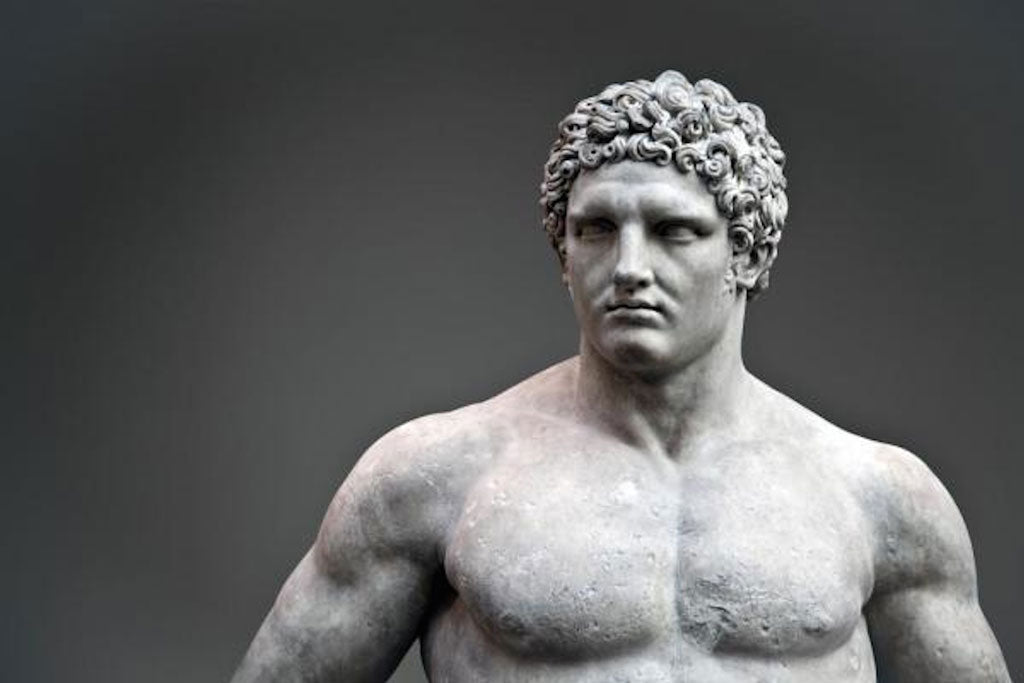
Statue of Hercules
B. Hercules, a torn being
But, above all, Heracles is a deeply torn character. Son of Zeus, he is attracted to the spiritual dimension.
However, rejected by Hera, his mother, he suffers from this lack of affection that only the goddess could fill. It is from this fracture that his psychological imbalance arises. Heracles is thus torn between his celestial vocation and his shortcomings, which lead him to the most vile acts or the cruelest murders. It is conceivable that thanks to this duality, the hero can reveal his full greatness.
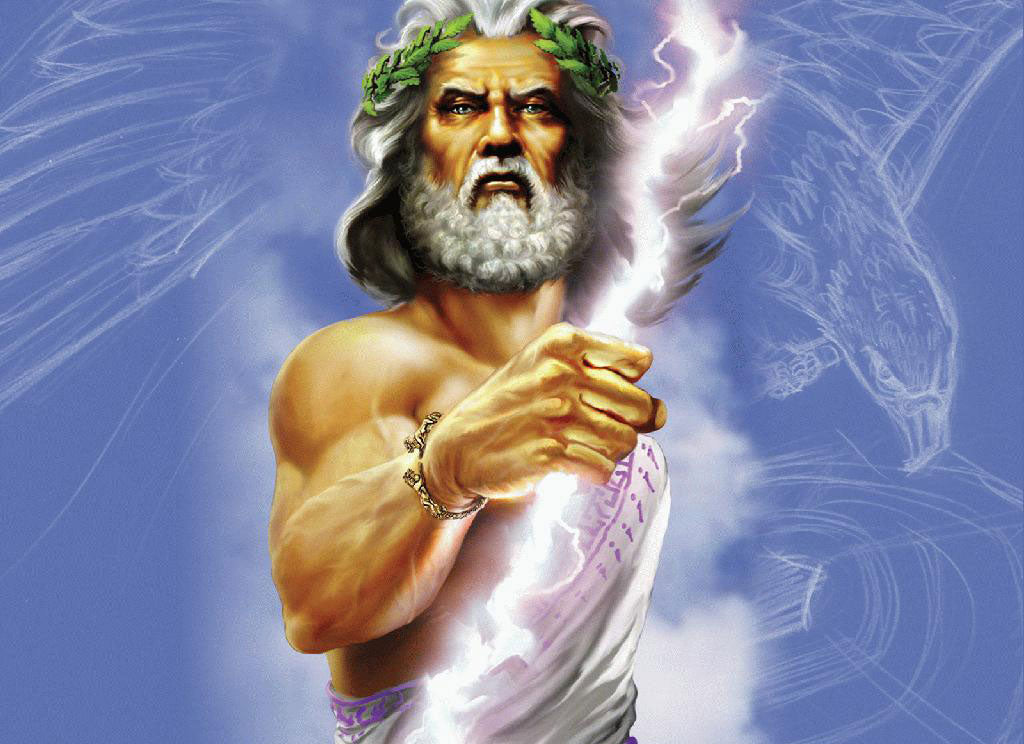
Zeus, father of Hercules
C. The 12 labors of Hercules, symbol of success, virtue and eternity
The Twelve Labors of Heracles were considered symbols of realities as diverse as contempt for mediocrity, the eternity of virtue or the power of eloquence. Above all, the works of Hercules are transposed into a symbol of individual liberation and the pursuit of immortality through the expiation of one's sins.
It is for sure, and thanks to his heroic gesture, that he succeeds in defeating, exterminating or dominating all the monsters (symbols of epidemics, vice or evil forces) that cross his path. Subjected to his father's orders, Hercules carries out the work one by one. He cannot start a new job without finishing the previous one.
Many of his works were often associated with certain ancient rites. For example, the fight against a bull, or against a man disguised as a bull, was one of the tests for young Cretan aspirants.
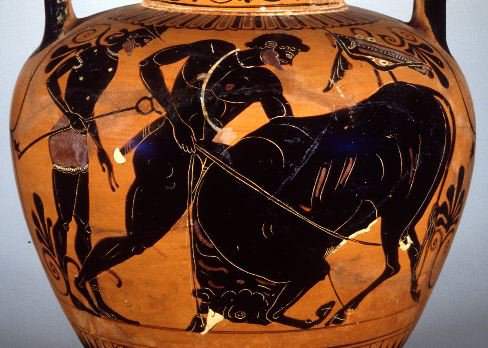
Pottery representing Hercules against the Crested Bull
D. Hercules, a hero with flaws
Hercules is the hero of all ancient Greece, but his incoherent temperament was not always favorable to him, far from it. Nevertheless, the Greeks have devoted many cults to him. He is still very popular today and his legend has left us many expressions, integrated into everyday language, such as "Cerberus", "the 12 labors of Hercules" or "having a Herculean strength".
You will have understood that Hercules is very often associated with physical power. However, with the exception of the twelve labors in which he seems truly invincible, he reveals many of his weaknesses in his life. One could compare his life to an eternal wandering without educational value, for the hero does not seem to get much out of his too many mistakes. To be meditated upon!
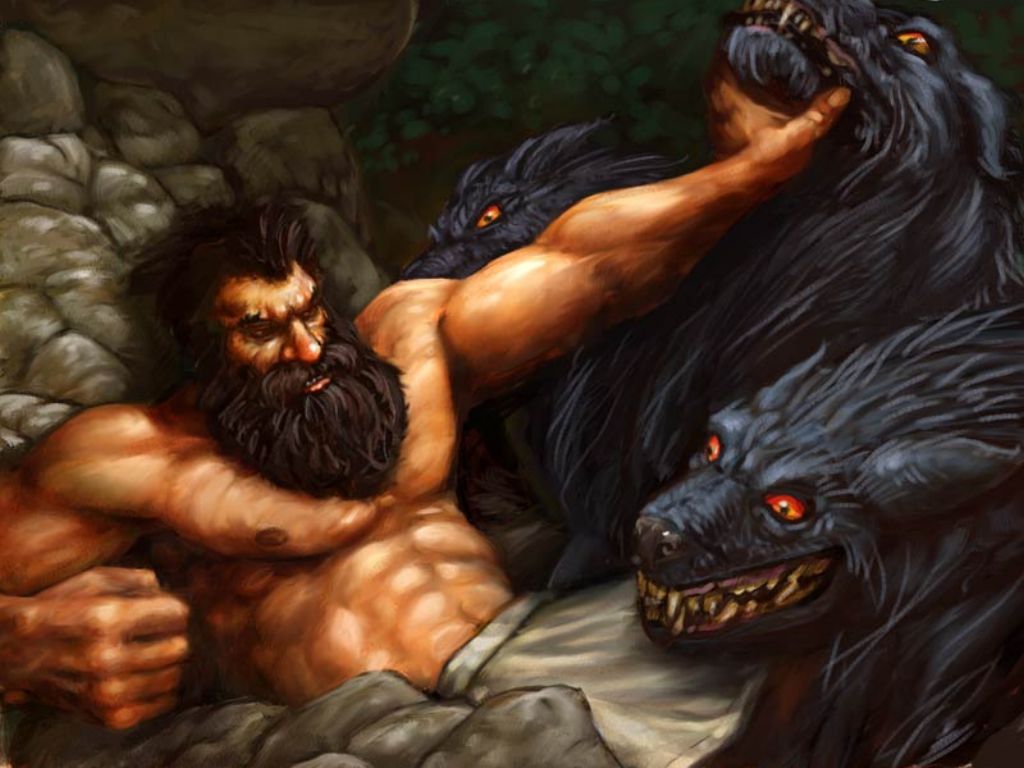
Hercules and Cerberus
If you want to know more, don't miss our article about the Dragon in Greek Mythology.
2. Lerna's hydra: what's that symbol?
A. Who is the Hydra of Lerna?
If hydras are recurrent creatures in literary fiction, their origin comes from Greek mythology and more precisely from the Lernaean Hydra.
One of the most famous and best-known monsters in Greek mythology is certainly the Hydra of Lerna. It is unquestionably linked to Hercules and belongs to a group of monsters composed of Cerberus, Orthos and Chimera. These children of Echidna also count in their genealogy Geryon, the Lion of Nemea and Phix. The hydra of Lerna has several characteristics in common with its "brothers and sisters":
- Its polycephaly (several heads). By the way, don't miss our article on the Three Headed Dragons,
- Its position on the edge of the world,
- An unfailing link with Hercules on the occasion of the 12 works.
This monster of frontiers belongs to a world of humidity and darkness typical of the surroundings of the afterlife. It is a wild, hard and cold setting in which all forms of civilization and culture are lacking.
According to some interpretations, it was once thought that the depths of the Lerna marshland would lead directly to hell.
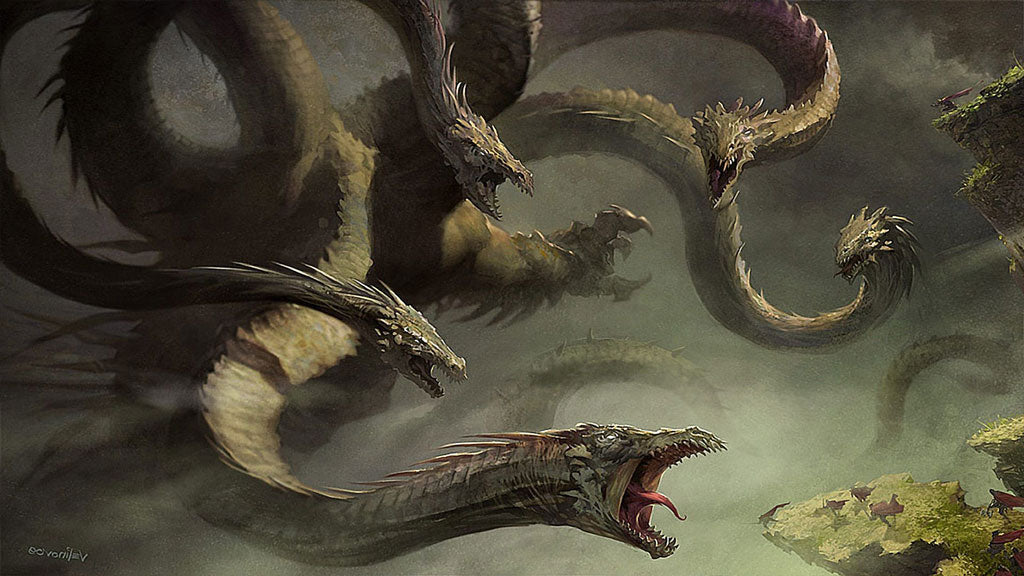
B. The Poison of the Hydra
In addition, some sources suggest that Hercules began to dig his grave without knowing it. He thus impregnated his arrows with the poison of the vanquished Hydra. Hercules had no idea that the same poison would one day cause his downfall. Indeed, before returning to Eurysthaeus, the son of Alcmene dipped his arrows in the blood of the defeated monster.
C. The Lernaean Hydra, a famous monster
The Hydra of Lerna is thus one of the most famous monsters of Greek Antiquity and belongs to one of the most taught and represented mythological cycles: the 12 labors of Hercules. The Hydra of Lerna has enjoyed popular fame thanks to the story of this myth since Antiquity.
This multi-headed monster is the source of a wide variety of quotations, from politics to literature and all kinds of artistic productions. You've certainly already seen that this mythological figure manifests itself in recent popular culture, particularly through cinema and video games.
In fact, we invite you to check out our article on the best films with dragons.
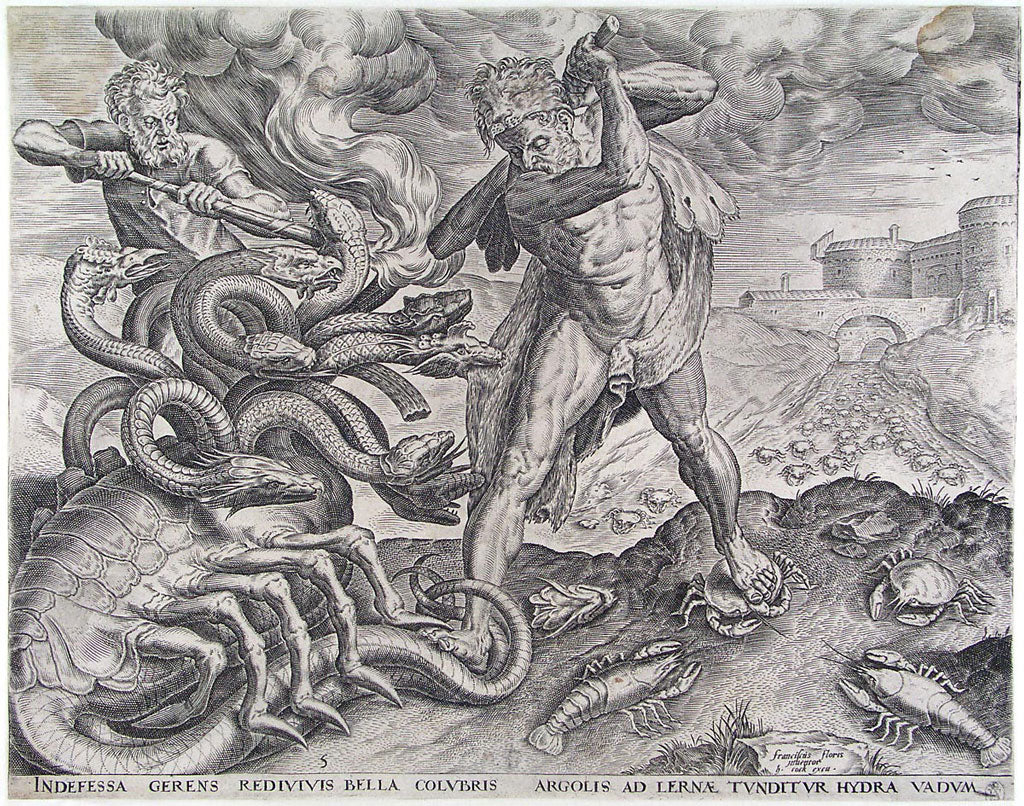
D. The Lernaean Hydra, symbol of evil
The hydra is therefore the symbol of evil in Greek mythology. Indeed, the Hydra of Lerna is a monstrous aquatic snake with several heads, one of which is immortal. Moreover, its breath is a dangerous poison.
3. Hercules versus Hydra of Lerna
A. An impossible mission
For this challenge, Eurysthaeus asked him to kill the Lernaean Hydra.
The battle between Hercules and the creature represents the last of the works of this Greek hero.
He is then equipped with the golden fleece to protect him from the powerful attacks of the hydra.
Eurysthaeus entrusted this impossible mission to Hercules, his son, thinking of getting rid of him. Not very nice! But he had, however, forgotten the divine power and the cunning of Hercules. 😠
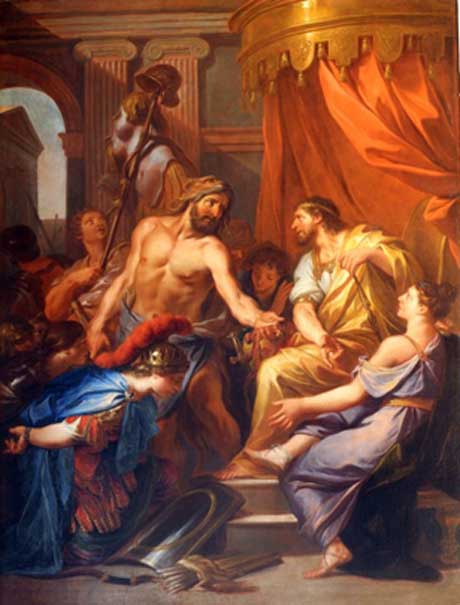
This monster lived in a cave near Lake Lerna. It had the body of a dog and seven snake heads. The Hydra of Lerna, born of Typhon and Echidna, was raised by Hera.
According to the writings, there are five or nine heads, some of them even announcing a hundred heads. One of them was immortal, well hidden under all the others. Each time a head was cut off, several heads grew back, making her death impossible.
This creature terrorized the swamp of Lerna. This fertile region lived in the horror of the Hydra. It had, among other things, attacked cattle nearby. This hydra was spitting out deadly venom.
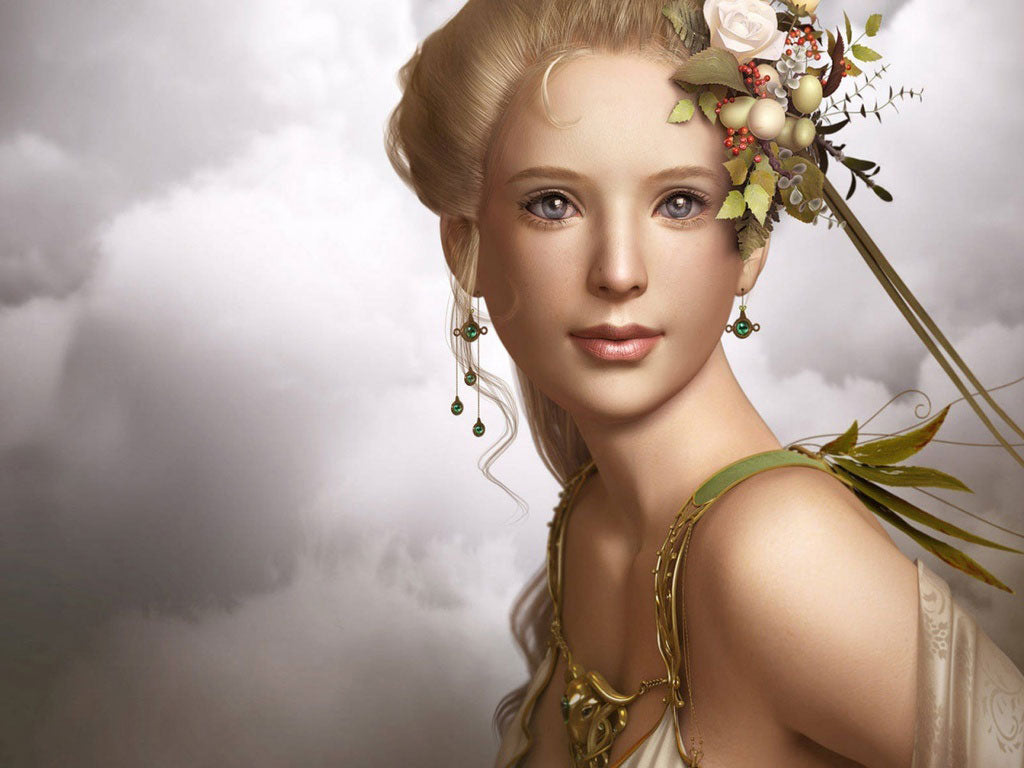
Hera
B. The Fight of Hercules against the Lernaean Hydra
Athena had thought about how Hercules could defeat this monster, and when he arrived at Lerna, she showed him the hiding place of the Hydra in his chariot, led by the faithful Iolaos.
His hiding place was under a plane tree near the source of Amynome, in the middle of a swamp. On his advice, he forced the Hydra out and threw flaming arrows at it. Then he held his breath, for the smell was pestilential and above all deadly. He was seized and the monster wrapped itself around his feet in an attempt to knock him down.

He tried in vain to strike the monster's head with his club. Nothing helped, he had barely crushed one of them and two or three others grew back instead.
A giant crab sent by Hera—queen of the sky and Olympus—left the nearby sea to help the Lernaean Hydra. He tried to pinch Hercules's foot to distract him, but Hercules eventually crushed his shell of anger.
The Greek, seeing the ineffectiveness of his arrows against the Hydra's scaly skin, called upon Iolaos, his nephew. The number of heads of the hydra only increased. At that moment, Iolaos set fire to the trees in order to prevent the Hydra from rekindling new heads.
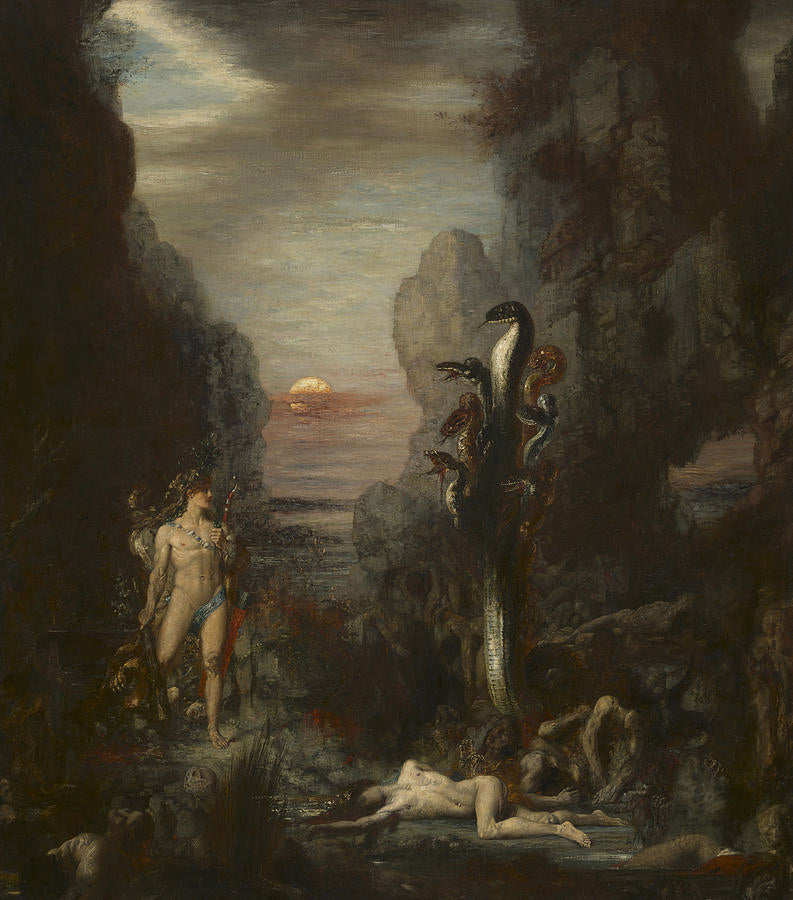
He then used it to cauterize the flesh of the neck of the legendary monster, after cutting off the heads. His idea stopped the blood and the multiplication of the heads.
Finally, Hercules was able to decapitate the immortal head of the struggling creature. Rid of the heads of the hydra, Hercules tore the entrails from the body and plunged his arrows into the venom of the severed head. With each arrow fired, the slightest injury caused by one of them was irretrievably fatal. The monster collapsed in a matter of moments. Hercules buried it alive under a big, heavy boulder by the side of the road.

In order to reward the crab (cancer) for his services and especially for having paid with his life, Hera has placed him under the twelve signs of the zodiac, so that he may shine eternally.
On the other hand, Eurysthaeus did not wish this work to be done thanks to Iolaos, who had brought his help to Hercules. It was a work for nothing, because he refused to recognize this challenge as a success.
4. Where is Lerna?
Lerna is located near the sea, at a certain distance from the city of Argos.
To the west is Mount Pontinos with its forest of sacred plane trees.
Every year in Lerna, nightly and secret rites were organized in honor of Dionysos, who had gone to Tartarus to fetch his mother Semele.

Not far away, the secrets of learning were celebrated in an enclosure marked by the place where Hades and Persephone descended from Tartarus.
This region, fertile and sacred at the same time, lived in the horror of Hydra. He had found refuge under a plane tree with the sevenfold source of Amymona. He roamed the bottomless swamps of Lerna and the nearby Alcyonian Lake. These swamps were the tomb of many reckless travelers.
5. The place of the Hydra of Lerna in art
The place of the Hydra of Lerna in art is quite important. It is regularly found throughout the centuries.
Researchers have thus found many old pottery decorated with the scene where Heracles cuts the head of the Hydra, while his nephew Iolaos cauterized them with a torch.
Moreover, this theme has largely inspired contemporary artists such as Pollaiolo, Cranach, Guido Reni, G. Moreau or sculptors such as Rudolf Tegner.

Although there are few literary references, the subject has existed since the beginning of the 7th century BC.
Moreover, this myth has a certain iconographic success. In fact, there are more than a hundred illustrations of the myth in the archives. The oldest images show three engraved Corinthian brooches dating from the end of the 8th or beginning of the 7th century BC.
The copy kept in the British Museum represents the theater of the fight against the Lernaean Hydra. A man on the right is holding a five-headed hydra placed in front of him. The frame is reminiscent of a lake or swamp environment. Below him, a much smaller figure (probably Iolaos) seems to be attacking the monster's tail.
In addition, a set of 13 Corinthian vases from the 5th century BC uses these motifs with a variation in the position of the figures. Hercules and Iolaos are present on both sides of the hydra of Lerna.

6. Hercules in Roman mythology
It was Hercules (the equivalent of Heracles in Roman mythology) who succeeded in killing the hydra by shooting it with several flaming arrows. More precisely, to prevent the heads he cut off from growing back, he then cauterized the stumps by setting them on fire. As for the immortal head, he buried it under a rock.
Hercules had to empty the training swamp. The springs that fed the marsh permanently contaminated the soil and made his efforts useless.
The swamp was therefore compared to the hydra and the springs to the reborn heads.
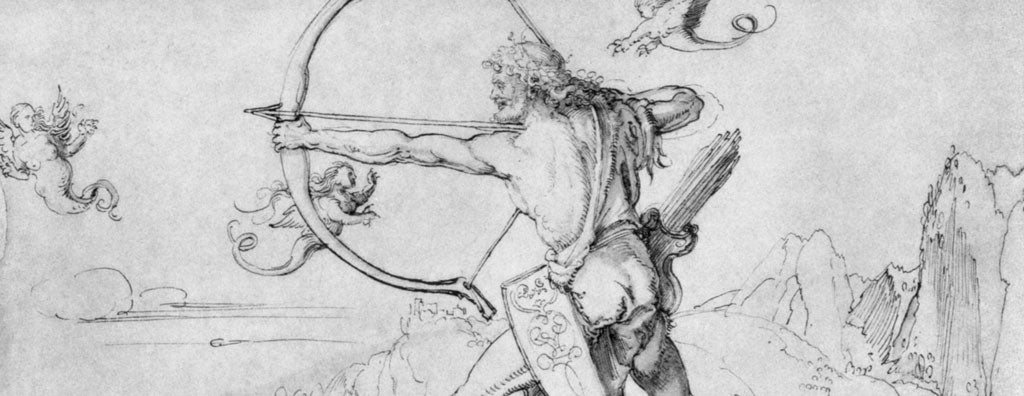
Pausanias admitted that there was a hydra that was much larger than usual and had a strong poison. However, according to him, Peisander of Kamiros exaggerated the description of the Hydra to make it sound more terrible and to give his worms more power.
The surrounding cities of Mycenaeus were subject to Eurysthaeus, with one exception: Lerna, which was ruled by a king of the same name.
The second task of Hercules was to conquer this city and destroy a citadel called "Hydra", which was guarded day and night by fifty archers stationed at the top of a tower.
The tower was attacked and every time an archer was shot down, two others came to replace him. King Lerna summoned the army of a Carian mercenary named Crab to reinforce his lines. Hercules did the same with the help of Iolaos, who came with Theban reinforcements. The tower was set on fire and Lerna's army destroyed.
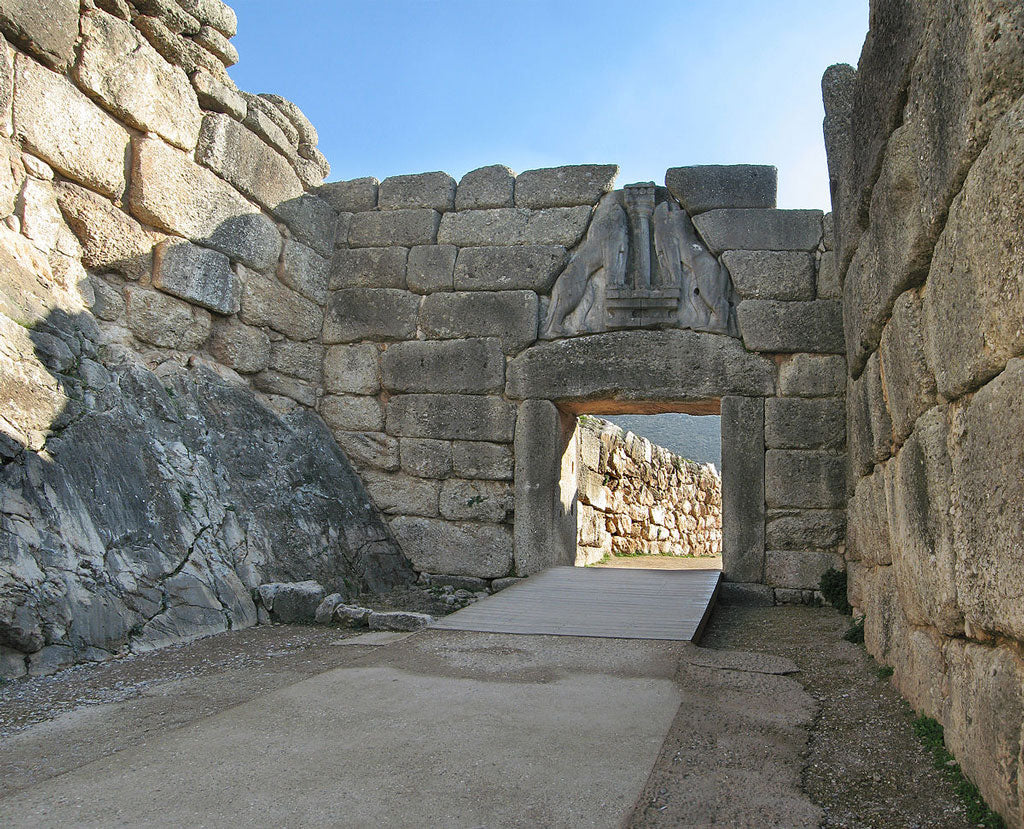
7. Moral of the story
What you can learn from this myth of the hydra is that it is the symbol of the dark side of man, composed of an evil and destructive hatred, a kind of emblem of the vices of humanity.
It is an impossible fight that man is waging against the Hydra, because you have understood that evil is never really defeated. It alters all those who come into contact with the Hydra, making them even worse. Each victory against the dark and chaotic sides ends by reinforcing the same dark and upset aspects.
To make things simpler, you can compare the Hydra as the symbol of a person who scatters or is lost, so he accumulates illusions or mistakes without learning from them (like the heads that keep growing back), instead of going to the essential and retaining a certain morality in its actions (by cutting off the Hydra's central head).
What you need to remember is that you need to learn from your mistakes—it's by being wrong that you learn—and that in order to achieve your goals, don't spread yourself too thin!
And if you're eager to pursue your passion for multi-headed monsters, Dragon Vibe can only recommend:







